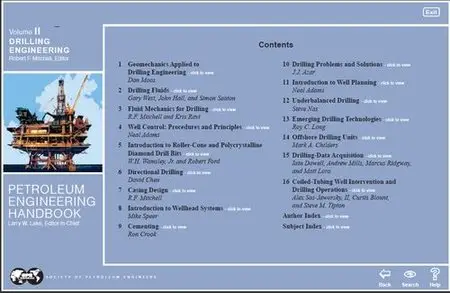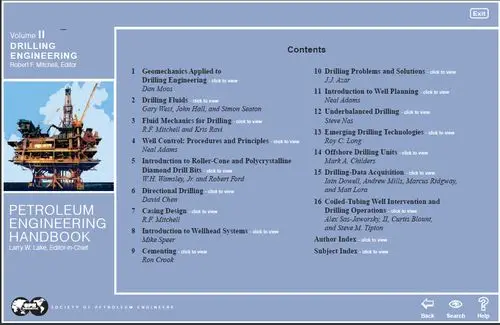Petroleum Engineering Handbook, Vol 2: Drilling Engineering By Larry W. Lake, Robert F. Mitchell
2007 | 763 Pages | ISBN: 1555631290 | PDF | 45 MB
2007 | 763 Pages | ISBN: 1555631290 | PDF | 45 MB
You hold in your hand the very fi rst Drilling Engineering volume of the SPE Petroleum Engineering Handbook. This volume is intended to provide a good snapshot of the drilling state of the art at the beginning of the 21st century. Obviously, the history of well drilling goes back for millennia. The history of “scientifi c” oilwell drilling had its beginnings at the end of Word War II. Perhaps one indication was that while Petroleum was fi rst established as a Division of the American Inst. of Mining, Metallurgical, and Petroleum Engineers (AIME) in 1922, it was not established as a Branch until 1948. The first SPE reprinted volume of the Petroleum Branch was the 1953 Transactions of the AIME, Petroleum Development and Technology (Vol. 198). This volume had a total of seven papers related to drilling and completion topics, a relatively small proportion of the total of 344 pages. The fi rst wave of scientifi c drilling was an era of slide rules and hand calculations. Several references give an idea of the technology level of this era; Developments in Petroleum Engineering by Arthur Lubinski (1987) provides a good overview of the mechanical engineering aspects of drilling, while W.F. Rogers’ Composition and Properties of Oil Well Drilling Fluids (fi rst edition) gives a picture of wellbore hydraulics in 1948. The technology of this era consisted of relatively simple but effective models of very complex phenomena. Former SPE President Claude Hocott once said that any calculation that could not be summarized on a note card would not be useful, and for that era, he was correct. Today, it is diffi cult to appreciate the tedium of evaluating these simple formulas with a slide rule. The next wave of scientifi c drilling introduced a new computational tool—the electronic computer—beginning in the 1970s. Young engineers, who had used primitive computers as part of their university education, were now ready to break Hocott’s onecard rule and delve into the complexity of the phenomena of drilling. As an example of the explosion of knowledge, consider the 1980 Transactions of the Society of Petroleum Engineers (Vol. 269) (note the name change!). The size of the volume nearly doubled to 629 pages, and the number of drilling- and completion-related papers increased 10-fold. To get a feel for the technology level of this era, the textbook Applied Drilling Engineering by A.T. Bourgoyne et al. gives a good overview of the state of the art in 1984. We are now beginning a third wave of scientifi c drilling. The days of novel computer application are reaching their twilight years, and a period of evaluation and consolidation is beginning. Computer science and numerical analysis are at a much higher level of accuracy and sophistication today than they were in the 1970s, and many of the technology developments of that era could be re-examined in light of modern techniques. Further, we all recognize that the computer can do far more than just execute numerical calculations. While we can anticipate some of these developments, I suspect we will fi nd that we did not dream big enough. In an effort like this, the editor quickly recognizes the multidisciplinary nature of the modern drilling process, and his own inadequacies in most of these disciplines. I would like to thank the efforts of this volume’s authors, going above and beyond the call of duty with little fi nancial reward but with, perhaps, a little fame for being the fi rst. I also would like to thank James Bobo for getting this effort off the ground and providing guidance early in the process. I also thank the Editor-in-Chief, Larry W. Lake, for offering me this task and not allowing me to say no.



